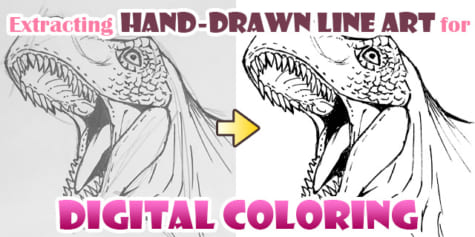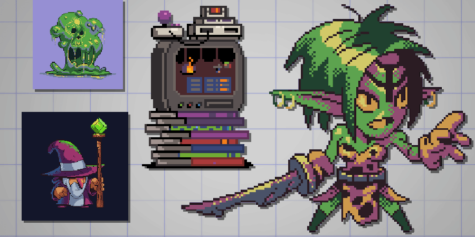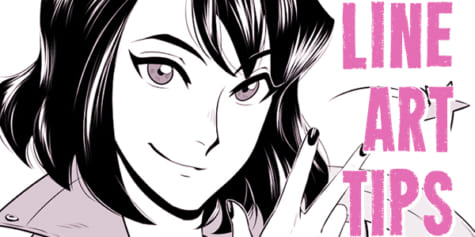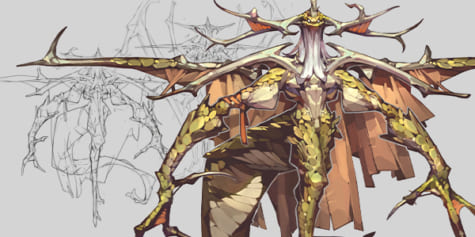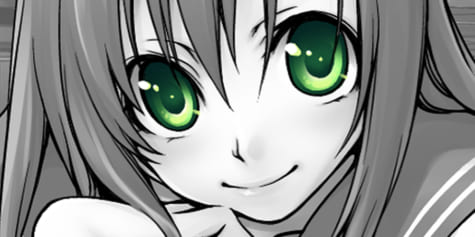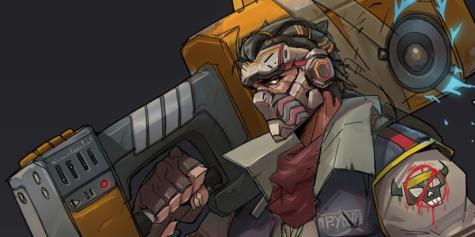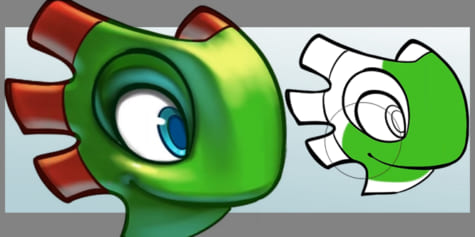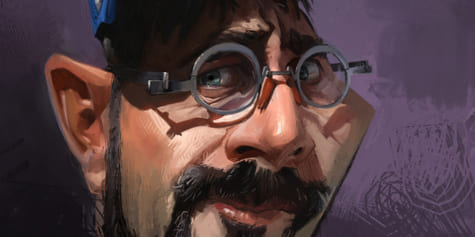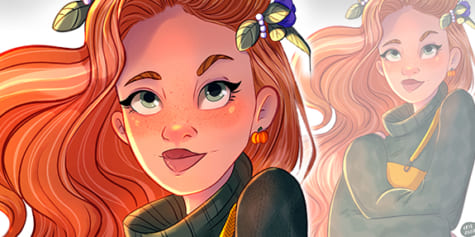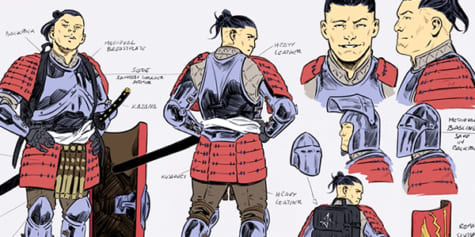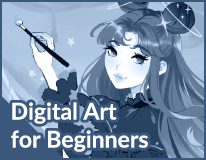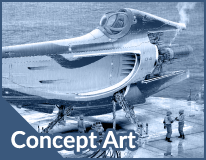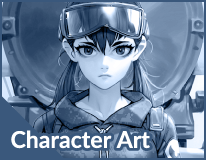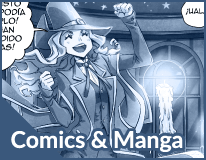How to draw a cute unicorn
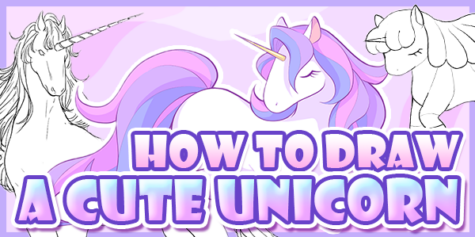
Learn the essential characteristics of how to draw a unicorn and how to create a stylized version, similar to those found in picture books.
Let’s draw one of the most adored fantasy animals, the unicorn.
In this tutorial, we will introduce the basic characteristics of the unicorn, such as the pure white body and a beautiful, shining mane. You’ll also learn how to draw a stylized version similar to a character in a picture book.
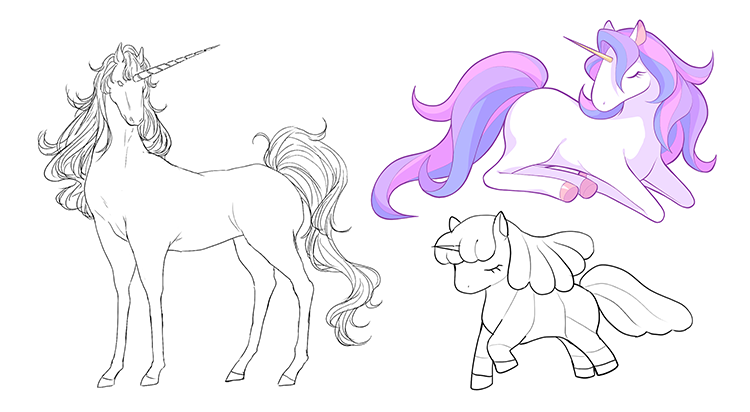
Contents
What is a unicorn?
A unicorn is a mythical creature resembling a horse with a horn growing from its forehead.
This means that unicorns and horses share a similar body structure. However, there are some distinct elements to know that divide horse-like fantasy creatures! While a unicorn has a horn and a Pegasus has wings, alicorns have both, a horn and wings.
The face of a unicorn
Horses have their eyes located on the sides of their heads, which gives them a wide field of vision. This is common for herbivores and helps them detect and protect themselves from potential predators.
So, when drawing the head from an angle, make sure the eyes are in the right spot at the side of the head and not too far apart or together.
When drawing a unicorn, make sure to add a horn to the forehead of the horse’s head. It’s the most important feature! If your version has two horns, it is a bicorn. If it has three horns, it is a tricorn.
You can create your personal unicorn version by modifying the shape of the horn as well.
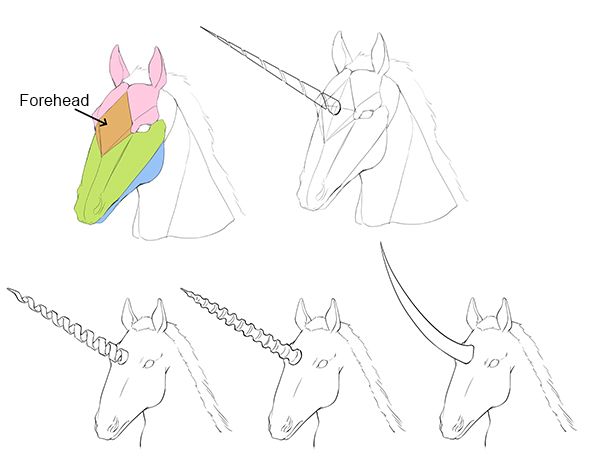
The mane can also have various characteristics.
You can highlight the unicorn’s elegance, by adding a voluminous mane, similar to how you would draw elegant human hair.
To create your unique unicorn, try styling and arranging its mane creatively.
Create a voluminous tail to match the mane’s appearance.
You can use the way you draw human hair as a reference, when drawing the mane and tail.
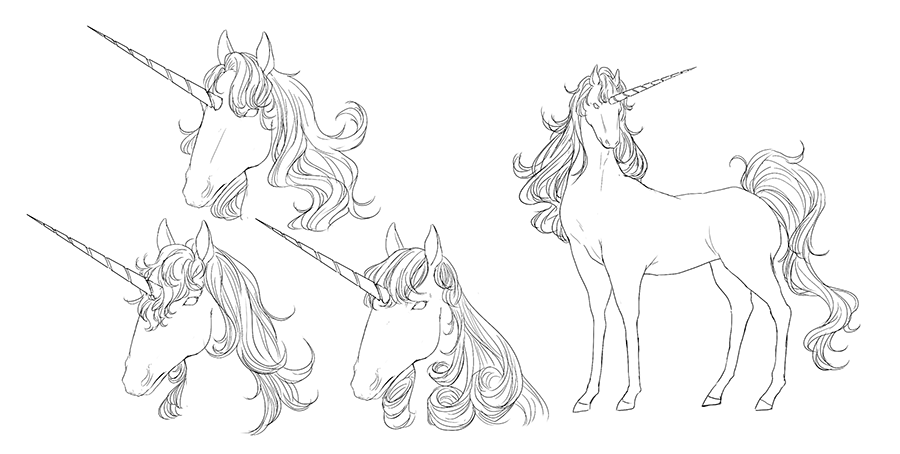
Recommended Article
How to Draw Hair
https://www.clipstudio.net/how-to-draw/archives/159719
1. Stylizing the face of a unicorn
When drawing a stylized unicorn that more closely resembles the style used in an anime or a picture book, the eyes should be larger and the the face can be shorter and rounder.
To draw a horse’s face, it’s important to preserve the characteristic length of it. One way to do this is by drawing two circles, one big and one small, as opposed to just one circle which may result in a face that looks more like a dog or a cat.
A horse’s mouth is typically located on the bottom half of its face. However, in stylized depictions, the mouth and nose can even be omitted.
If you add eyelashes, it can create a feminine appearance, that is often associated with the elegance of unicorns.
A popular facial expression is a serene face with closed eyes.
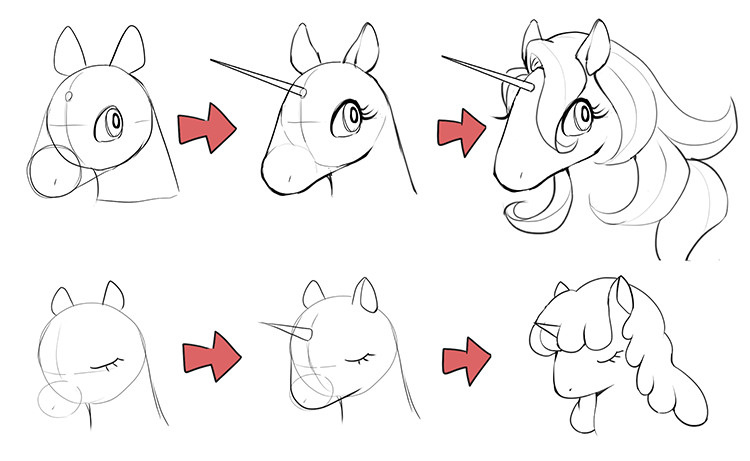
The body structure of a unicorn
We use the body of a horse as a reference for our unicorn, since it is the closest to the actual animal.
A horse’s neck gradually thickens from the head to the body, the boundary between the neck and body is somewhat vague. The weight of the head creates a gentle curve in the front.
Start at the top of the horse’s head and trace the spine down to the waist; the halfway point will be the guideline for where to position the front legs.
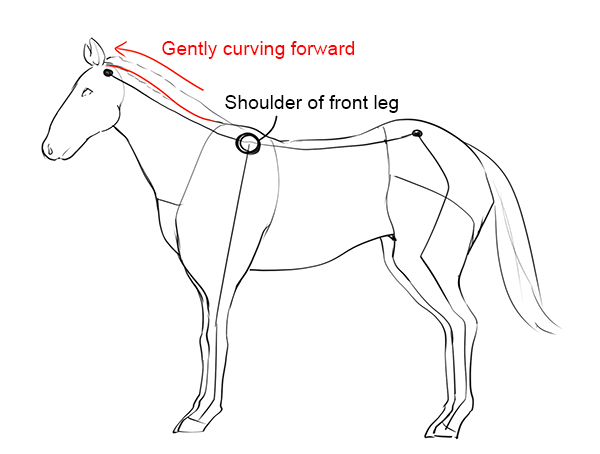
The horse’s heel is the part that appears bent at the back like a knee. The actual knee is located within the thickest part of the thigh.
A horse’s hoof is really an evolved nail and the horse’s legs are always on tiptoe to support the body.
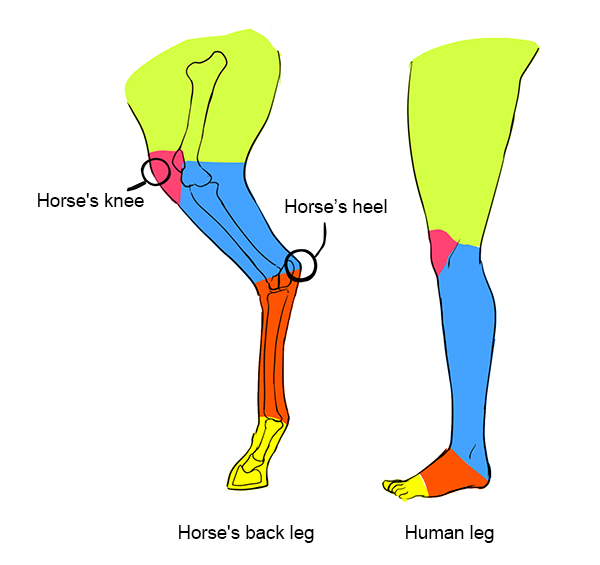
Horses are highly athletic and have highly developed muscles. When drawing a unicorn with more realistic horse proportions, it is important to emphasize the muscles to create a more beautiful appearance. However, when drawing a cuter, more stylized unicorn, it is better to avoid drawing the muscle protrusions and instead draw them as rounded shapes to create a bit of a chubby look.
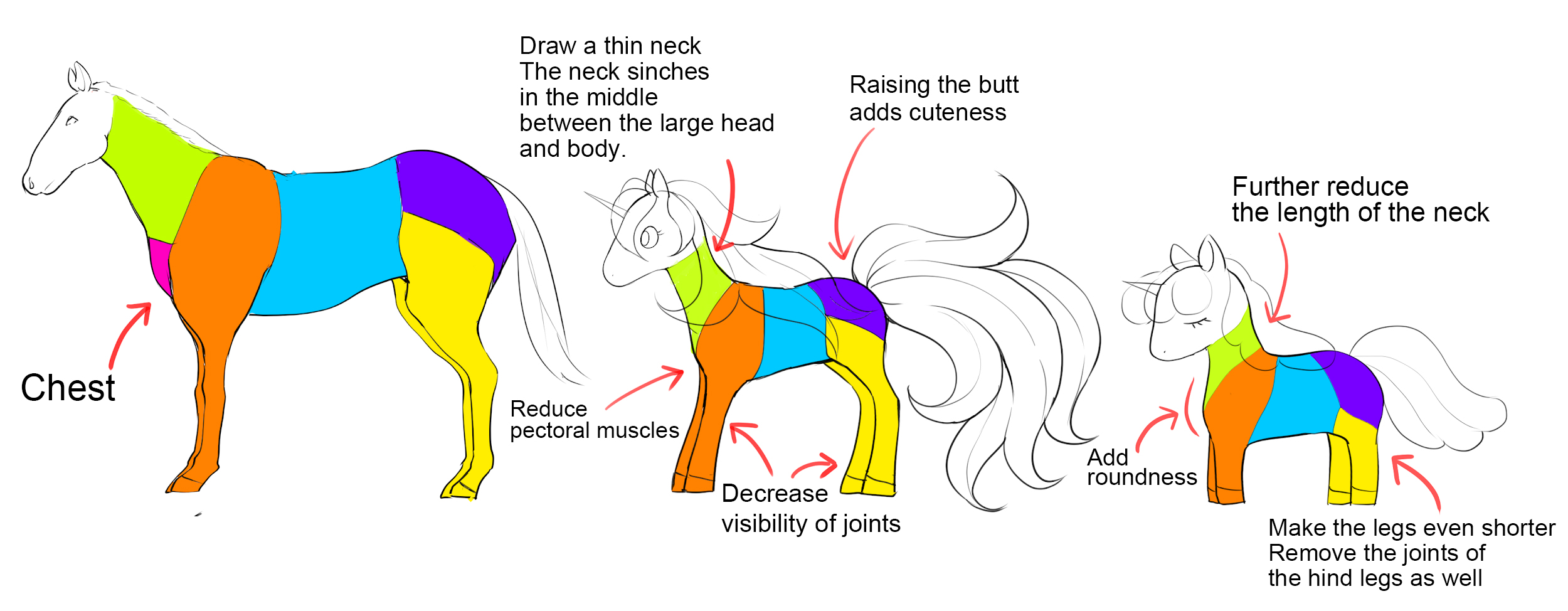
Emphasizing the volume of the mane and tail while drawing the fluffy fur will create a luxurious appearance. You can draw both the tail and hair long enough for it to touch the ground if you like.
The more stylized the image, the more rounded the body and the shorter the neck and legs become.
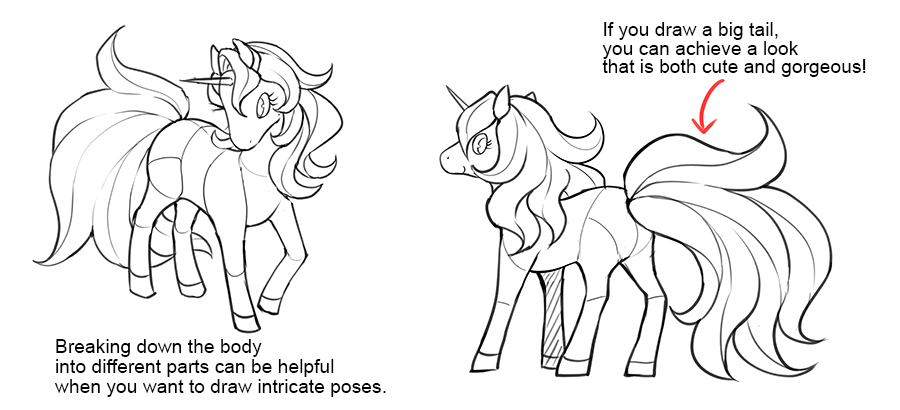
By understanding the correct position of the joints, you can draw complex poses even with stylized shapes.
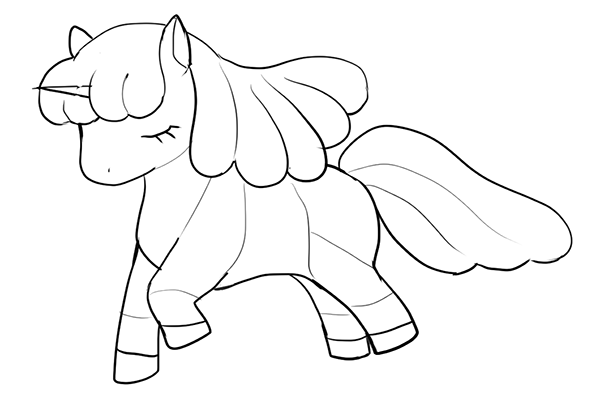
Hint:
Horses are four-legged animals, but unlike dogs and cats, they have hooves instead of paws.
Since the hooves of horses ridden on by humans tend to wear out more than they grow, horses wear shoes made of metal called horseshoes.
However, since unicorns are typically imagined to live in the wild, there is no need to draw horseshoes.
Posing
The unicorn, a mythical creature, is believed to have a similar habitat and way of life as wild horses. When people imagine horses, they generally visualize them galloping across vast grasslands.
Horses in the wild often trek long distances in search of edible grass and watering holes.
When attacked by carnivorous animals, their primary defense mechanisms are their powerful legs.
It is crucial for horses to be able to walk and run, as this allows them to escape quickly from predators.
Despite horses having several different walks, there are four commonly seen types in drawings.
A leisurely walk or “Standard walking”
Standard walking involves moving the right hind leg forward, followed by the right forelimb, then the left hind leg, and finally the left forelimb, repeating these steps to move forward.
Even when walking slowly, they can walk much faster than humans.
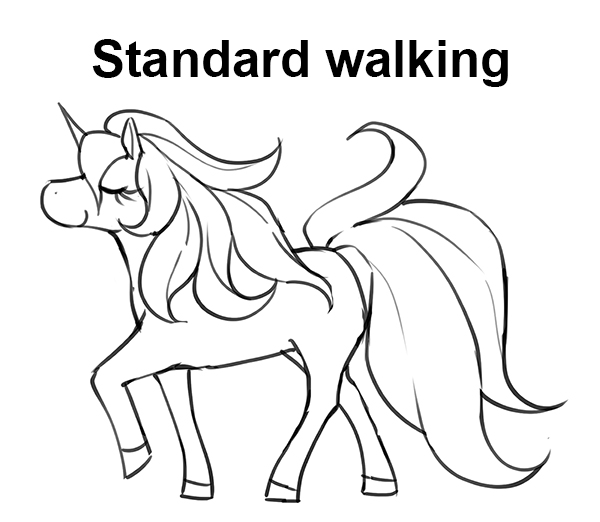
“Trotting” is walking at a slightly fast pace
Trotting involves moving the front and back legs diagonally at the same time, alternating between the left and right. This is called “diagonal gait”.
There is also a gait called “pace” in which the front and hind legs of the same side are moved together like in animals such as camels. However, this gait is mainly learned by trained horses, so it would seem unnatural for a wild unicorn. It is generally not the case that a horse that is running a gait will ”pace.”
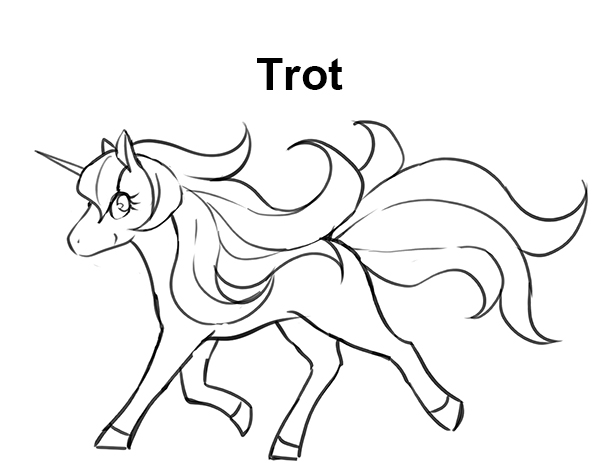
A gait that is faster than a trot is known as a “canter”.
The canter is a three-beat gait of a horse, where one of its hind legs drives it forward. It repeats the movement of putting their right hind limb forward, then bringing their left hind limb and right fore limb forward at the same time, and then bringing their left fore limb forward.
This canter is commonly associated with the pose of a horse galloping across a meadow.
The fast running gait of a horse, as seen with racehorses, is called a gallop.
The gallop pose is the horse’s most dynamic pose.
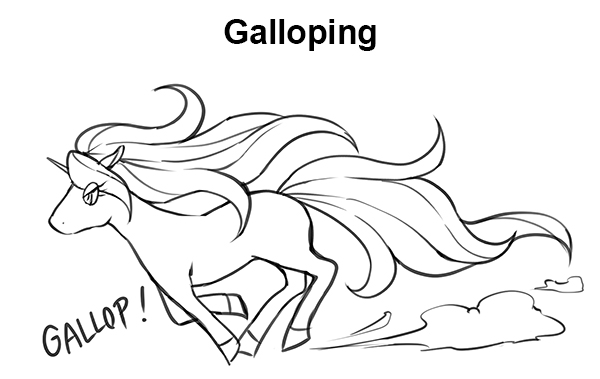
Calm movements, such as slow walking or sleeping, give a more graceful appearance reminiscent of unicorns, rather than dynamic movements.
Creating a fairy tale unicorn
Let’s try drawing an illustration of a stylized unicorn using the unicorn’s face, body, and pose introduced above as a reference.
Here, we are going to draw a gentle unicorn playing with a butterfly.
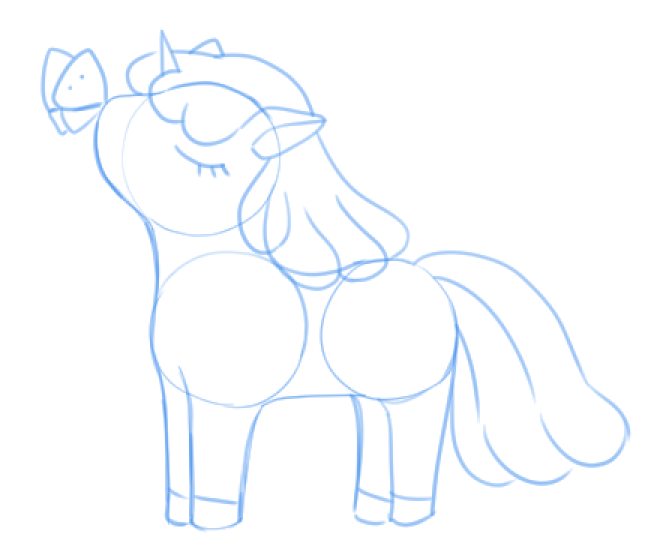
1. Drawing the line art
Draw the line art by inking over your sketch with a pen.
To emulate the look of a cute unicorn from a picture book, use a pen with a pencil-like touch.
When creating stylized illustrations, thicker lines may help to achieve a cuter look.
Once you have finished drawing the line art, erase the draft with an eraser or hide the sketch layer.
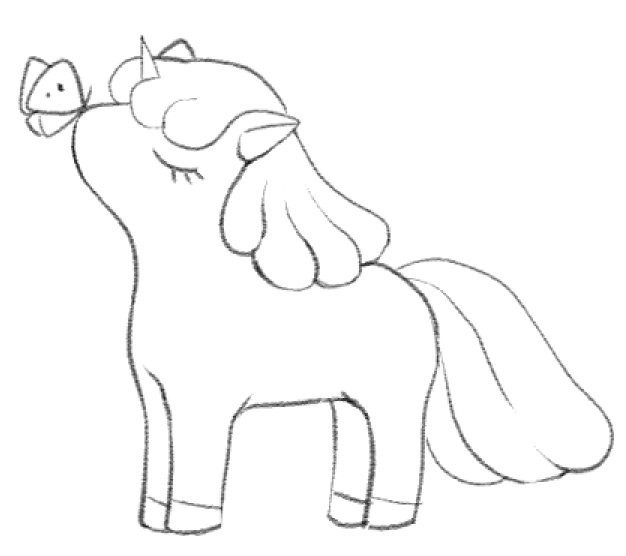
2. Coloring
To create a soft atmosphere, apply color using a watercolor brush.
We selected white as the unicorn’s body color and pastel colors for the mane, tail, hooves, and horn.
When increasing the number of colors, paint with colors of the same brightness and saturation so as not to lose the overall shade.
To create a gradient effect on the mane and tail, apply color to the ends of the hair.
When adding shadows to white parts, avoid using a dark colors like gray or black as it will make the painting look dull. Instead, use a light purple color that matches the color of the mane.
To make it easier to distinguish between the left and right legs, apply shadows to the entire surface of the legs that are at the back of the unicorn, the right legs in this case.
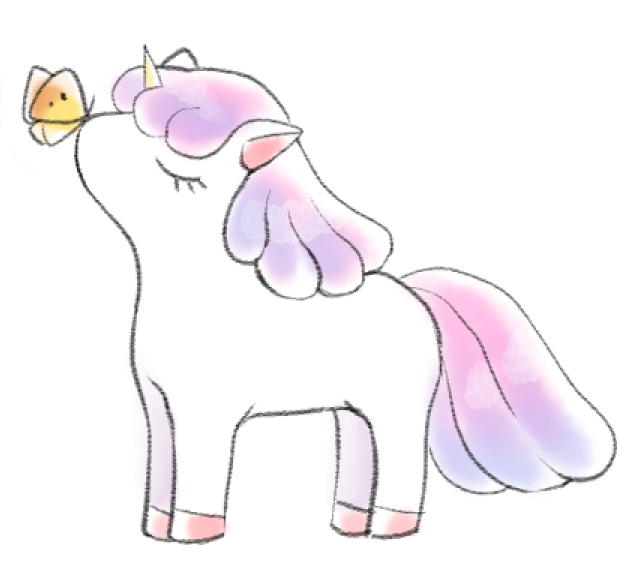
Hint:
To create a watercolor effect, leave some parts of the painting unfilled on purpose.
You can also leave some areas unpainted where light might hit, to create highlights.
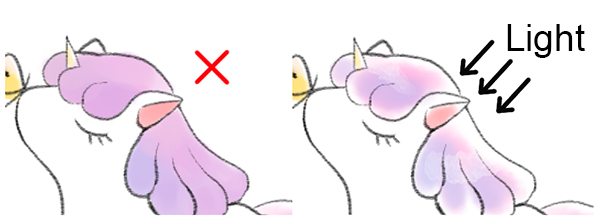
3. Background and Finishing Touches
Add a motif that matches the unicorn, such as a natural landscape, clouds, or a rainbow, in the background.
Change the black line art color to a slightly brighter purple to match the background.
With this, your stylized unicorn illustration is complete.
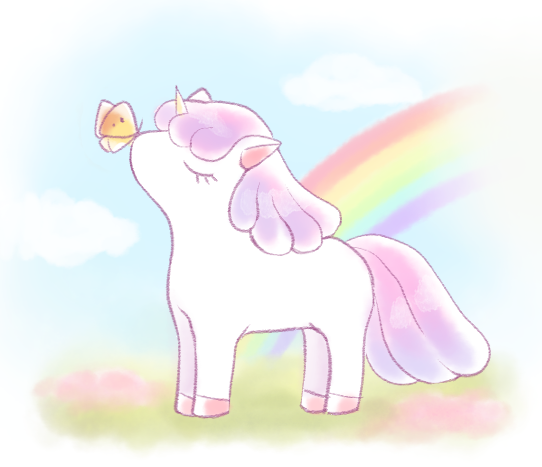
Unicorns are mythical creatures.
There is no right or wrong when it comes to drawing a unicorn.
Use these guides to draw your very own dreamy unicorn!
Recommended Articles
If you enjoyed drawing this unicorn, you may also like these articles:
How to Draw Horses
https://www.clipstudio.net/how-to-draw/archives/164904
How To Draw Animal Heads & Snouts
https://www.clipstudio.net/how-to-draw/archives/167440







